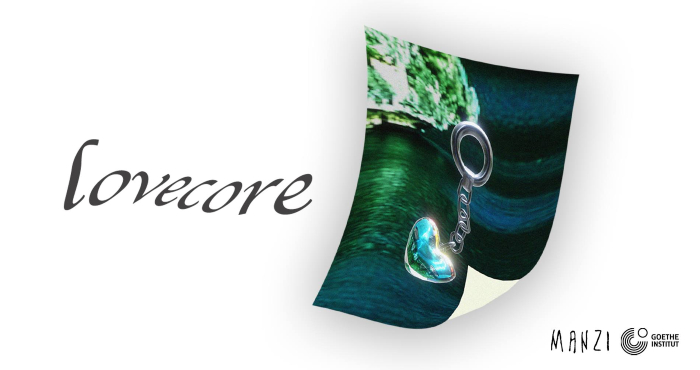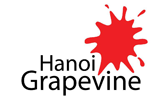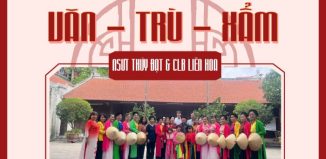Lovecore

10:00 – 18:00, Thứ ba – Chủ nhật 29/10 – 25/11/2021
Manzi Exhibition Space
Số 2 ngõ Hàng Bún, Ba Đình, Hà Nội
Thông tin từ Manzi:
“Xem kìa kho báu tuyệt luân
Kỳ trân dị bảo kể sao rõ ràng
Khác gì Động Bích Đào Nguyên
Hang sâu kia ẩn bao nhiêu tiềm tàng
Ngó quanh ai chẳng ngỡ ngàng
Chắc mẩm vạn thứ nàng kia đủ đầy”
Ngân nga vang lên nơi hang động bí mật là tiếng hát thánh thót của công chúa Ariel, ở một trong những phân đoạn ấn tượng nhất trong bộ phim hoạt hình ‘The Little Mermaid’ (Nàng tiên cá)⁽¹⁾. Xoay vòng nhảy múa nơi kho tàng của mình, Ariel phấn khích hồi tưởng về những “bảo vật” mà nàng thu thập được từ những chuyến thám hiểm xác tàu đắm và hang động dưới đáy biển – những đồ vật vốn thuộc về thế giới của loài người trên bờ, đã bị chính chủ nhân chúng làm lạc mất rồi rơi vào lãng quên. Tương tự, tại ‘Lovecore’⁽²⁾. của nghệ sĩ AP Nguyễn, một ý vị ngọt ngào lạ lẫm cũng xuất hiện – vừa ngất ngây khêu gợi, vừa bối rối bất ngờ. Bởi ở đây, AP cũng mời gọi và chào đón ta tiến vào kho báu cá nhân mà cô đã tích lũy qua nhiều năm nay. Ở đó, phơi bày trước ánh nhìn của người xem, là những đồ vật và trần thuật thuộc mong cầu và ước vọng riêng tư của nghệ sĩ, trong dáng vẻ tột cùng rực rỡ, yểu điệu mong manh, mà cũng không kém phần thuần khiết trung thực của chúng.
Hòn non bộ. Áo dài. Vịnh Hạ Long. Đồ bikini. Karaoke. ‘Việt Nam Quê Hương Tôi’. Xuất hiện trong triển lãm này là những thị giác và văn bản (hay chính xác hơn là những đối tượng nghệ thuật mà nghệ sĩ khảo cứu, chất vấn), được lựa chọn từ dự án vẫn đang tiếp tục của AP, bắt đầu từ 2017, thời điểm nghệ sĩ rời Việt Nam để ra nước ngoài học tập và sinh sống. Hấp thu song đôi hai nền văn hóa, bị thu hút bởi xu hướng thẩm mỹ ‘kitsch’ và ‘camp’⁽³⁾, đồng thời say mê tất cả những gì tạm gọi là “quốc hồn quốc túy Việt Nam”⁽⁴⁾, nghệ thuật của AP nằm giữa ký ức cá nhân và tưởng tượng tập thể. Cô lấy cảm hứng sáng tác từ đó, luôn nỗ lực hợp nhất chúng, và có đôi khi, không khỏi bị kẹt lại ở chính vị trí trung gian đặc biệt này. Vay mượn từ các hiện tượng văn hóa đại chúng, tận dụng thứ thẩm mỹ đại trà và sản xuất hàng loạt, khai thác hệ thống các biểu tượng đã bị “xào nấu” đến sáo mòn, AP vui đùa và giễu nhại trong sáng tác của mình. Cô phá bỏ những quy ước, những mong đợi vốn định sẵn nơi các đồ vật và hình ảnh quen thuộc kia, bằng việc thay đổi các đặc tính và chức năng của chúng, hoặc thông qua việc đan cài, lồng ghép vào đó những phản tư cá nhân, tự truyện và trải nghiệm riêng tư. Vì lẽ đó, tác phẩm của cô đùa giỡn với những gì ta nghĩ rằng ta biết.
(1) ‘𝑇ℎ𝑒 𝐿𝑖𝑡𝑡𝑙𝑒 𝑀𝑒𝑟𝑚𝑎𝑖𝑑’ (𝑁𝑎̀𝑛𝑔 𝑡𝑖𝑒̂𝑛 𝑐𝑎́) 𝑙𝑎̀ 𝑏𝑜̣̂ 𝑝ℎ𝑖𝑚 ℎ𝑜𝑎̣𝑡 ℎ𝑖̀𝑛ℎ 𝑑𝑜 ℎ𝑎̃𝑛𝑔 𝑊𝑎𝑙𝑡 𝐷𝑖𝑠𝑛𝑒𝑦 (𝐻𝑜𝑎 𝐾𝑦̀) 𝑠𝑎̉𝑛 𝑥𝑢𝑎̂́𝑡 𝑛𝑎̆𝑚 1989, 𝑙ấ𝑦 𝑐𝑎̉𝑚 ℎ𝑢̛́𝑛𝑔 𝑡𝑢̛̀ 𝑐𝑎̂𝑢 𝑐ℎ𝑢𝑦𝑒̣̂𝑛 𝑐𝑜̂̉ 𝑐𝑢̀𝑛𝑔 𝑡𝑒̂𝑛 𝑐𝑢̉𝑎 𝑛ℎ𝑎̀ 𝑣𝑎̆𝑛 Đ𝑎𝑛 𝑀𝑎̣𝑐ℎ – 𝐻𝑎𝑛𝑠 𝐶ℎ𝑟𝑖𝑠𝑡𝑖𝑎𝑛 𝐴𝑛𝑑𝑒𝑟𝑠𝑒𝑛 (𝑥𝑢𝑎̂́𝑡 𝑏𝑎̉𝑛 𝑛𝑎̆𝑚 1837). 𝐾ℎ𝑜𝑎̉𝑛𝑔 𝑔𝑖𝑢̛̃𝑎 𝑡ℎ𝑎̣̂𝑝 𝑛𝑖𝑒̂𝑛 90, ‘𝑁𝑎̀𝑛𝑔 𝑡𝑖𝑒̂𝑛 𝑐𝑎́’ – 𝑐𝑢̀𝑛𝑔 𝑐𝑎́𝑐 𝑏𝑜̣̂ 𝑝ℎ𝑖𝑚 ℎ𝑜𝑎̣𝑡 ℎ𝑖̀𝑛ℎ 𝑎̆𝑛 𝑘ℎ𝑎́𝑐ℎ 𝑘ℎ𝑎́𝑐 𝑐𝑢̉𝑎 𝐷𝑖𝑠𝑛𝑒𝑦 – 𝑙𝑎̂̀𝑛 đ𝑎̂̀𝑢 𝑡𝑖𝑒̂𝑛 𝑟𝑎 𝑚𝑎̆́𝑡 𝑘ℎ𝑎́𝑛 𝑔𝑖𝑎̉ 𝑉𝑖𝑒̣̂𝑡 𝑁𝑎𝑚 𝑑𝑢̛𝑜̛́𝑖 đ𝑖̣𝑛ℎ 𝑑𝑎̣𝑛𝑔 𝑏𝑎̆𝑛𝑔 𝑣𝑖𝑑𝑒𝑜, 𝑣𝑎̀ 𝑘𝑒̂̉ 𝑡𝑢̛̀ đ𝑜́ đ𝑎̃ 𝑡𝑟𝑜̛̉ 𝑡ℎ𝑎̀𝑛ℎ 𝑚𝑜̣̂𝑡 𝑝ℎ𝑎̂̀𝑛 𝑐𝑢̉𝑎 𝑣𝑎̆𝑛 ℎ𝑜́𝑎 đ𝑎̣𝑖 𝑐ℎ𝑢́𝑛𝑔 đ𝑖̣𝑎 𝑝ℎ𝑢̛𝑜̛𝑛𝑔.
(2) 𝑇𝑖𝑒̂𝑢 đ𝑒̂̀ 𝑡𝑟𝑢̛𝑛𝑔 𝑏𝑎̀𝑦 𝑛𝑎̀𝑦 𝑐𝑢̉𝑎 𝐴𝑃 𝑡ℎ𝑎𝑚 𝑐ℎ𝑖𝑒̂́𝑢 𝑡𝑜̛́𝑖 𝑚𝑜̣̂𝑡 𝑝ℎ𝑜𝑛𝑔 𝑐𝑎́𝑐ℎ 𝑡ℎ𝑎̂̉𝑚 𝑚𝑦̃ 𝑟𝑎 đ𝑜̛̀𝑖 𝑡𝑟𝑒̂𝑛 𝐼𝑛𝑡𝑒𝑟𝑛𝑒𝑡 (𝑣𝑎̀ đ𝑢̛𝑜̛̣𝑐 𝑛ℎ𝑎̂𝑛 𝑟𝑜̣̂𝑛𝑔 𝑏𝑜̛̉𝑖 𝑛𝑔𝑢̛𝑜̛̀𝑖 𝑑𝑢̀𝑛𝑔 𝑐𝑎́𝑐 𝑘𝑒̂𝑛ℎ 𝑚𝑎̣𝑛𝑔 𝑥𝑎̃ ℎ𝑜̣̂𝑖 𝑛ℎ𝑢̛ 𝑇𝑖𝑘𝑇𝑜𝑘, 𝐼𝑛𝑠𝑡𝑎𝑔𝑟𝑎𝑚 𝑣𝑎̀ 𝑇𝑢𝑚𝑏𝑙𝑟). 𝑇𝑢̛̣𝑢 𝑐ℎ𝑢𝑛𝑔, 𝐿𝑜𝑣𝑒𝑐𝑜𝑟𝑒 𝑡𝑜̂𝑛 𝑣𝑖𝑛ℎ 𝑡𝑖̀𝑛ℎ 𝑦𝑒̂𝑢 𝑣𝑎̀ 𝑠𝑢̛̣ ℎ𝑜𝑎̀𝑖 𝑛𝑖𝑒̣̂𝑚, 𝑡ℎ𝑢̛𝑜̛̀𝑛𝑔 𝑘𝑒̂́𝑡 ℎ𝑜̛̣𝑝 𝑐𝑎́𝑐 𝑚𝑎̀𝑢 ℎ𝑜̂̀𝑛𝑔, đ𝑜̉, 𝑡𝑟𝑎̆̀𝑛𝑔, ℎ𝑜𝑎 𝑣𝑎̆𝑛 ℎ𝑖̀𝑛ℎ 𝑡𝑟𝑎́𝑖 𝑡𝑖𝑚, 𝑣𝑎̀ “𝑑𝑢̛̣𝑎 𝑡𝑟𝑒̂𝑛 𝑛𝑔𝑜̂𝑛 𝑛𝑔𝑢̛̃ 𝑡ℎ𝑖̣ 𝑔𝑖𝑎́𝑐 𝑐𝑢̉𝑎 𝑛ℎ𝑢̛̃𝑛𝑔 𝑔𝑖̀ 𝑙𝑎̀𝑚 𝑛𝑒̂𝑛 𝑠𝑢̛̣ 𝑙𝑎̃𝑛𝑔 𝑚𝑎̣𝑛 𝑛ℎ𝑎̂𝑛 𝑡𝑎̣𝑜.”
(3) 𝑇ℎ𝑜̂𝑛𝑔 𝑡ℎ𝑢̛𝑜̛̀𝑛𝑔, ‘𝑘𝑖𝑡𝑠𝑐ℎ’ (𝑘ℎ𝑖 𝑐ℎ𝑢𝑦𝑒̂̉𝑛 𝑛𝑔𝑢̛̃ 𝑠𝑎𝑛𝑔 𝑡𝑖𝑒̂́𝑛𝑔 𝑉𝑖𝑒̣̂𝑡, 𝑡ℎ𝑢̛𝑜̛̀𝑛𝑔 đ𝑢̛𝑜̛̣𝑐 𝑡ℎ𝑎𝑦 𝑡ℎ𝑒̂́ 𝑏𝑎̆̀𝑛𝑔 𝑡𝑢̛̀ ‘𝑠𝑒̂́𝑛’) 𝑔𝑎̆́𝑛 𝑙𝑖𝑒̂̀𝑛 𝑣𝑜̛́𝑖 𝑣𝑎̆𝑛 ℎ𝑜́𝑎 𝑝ℎ𝑢̛𝑜̛𝑛𝑔 𝑇𝑎̂𝑦, đ𝑎̣̆𝑐 𝑏𝑖𝑒̣̂𝑡 𝑙𝑎̀ 𝑡𝑟𝑜𝑛𝑔 𝑏𝑜̂́𝑖 𝑐𝑎̉𝑛ℎ 𝑐𝑢𝑜̣̂𝑐 𝑐𝑎́𝑐ℎ 𝑚𝑎̣𝑛𝑔 ℎ𝑎̣̂𝑢 𝑐𝑜̂𝑛𝑔 𝑛𝑔ℎ𝑖𝑒̣̂𝑝, 𝑘ℎ𝑖 𝑥𝑎̃ ℎ𝑜̣̂𝑖 𝑝ℎ𝑎́𝑡 𝑡𝑟𝑖𝑒̂̉𝑛, đ𝑜̛̀𝑖 𝑠𝑜̂́𝑛𝑔 𝑣𝑎̣̂𝑡 𝑐ℎ𝑎̂́𝑡 𝑑𝑢̛ 𝑔𝑖𝑎̉, 𝑐𝑜𝑛 𝑛𝑔𝑢̛𝑜̛̀𝑖 𝑛𝑔𝑎̀𝑦 𝑐𝑎̀𝑛𝑔 𝑑𝑎̀𝑛ℎ 𝑛ℎ𝑖𝑒̂̀𝑢 𝑡ℎ𝑜̛̀𝑖 𝑔𝑖𝑎𝑛 ℎ𝑜̛𝑛 𝑐ℎ𝑜 𝑐𝑎́𝑐 ℎ𝑜𝑎̣𝑡 đ𝑜̣̂𝑛𝑔 𝑔𝑖𝑎̉𝑖 𝑡𝑟𝑖́ 𝑣𝑎̀ 𝑛𝑔ℎ𝑖̉ 𝑛𝑔𝑜̛𝑖. 𝐿𝑎̀ “𝑛ℎ𝑢̛̃𝑛𝑔 𝑣𝑎̣̂𝑡 𝑏𝑎̆́𝑡 𝑐ℎ𝑢̛𝑜̛́𝑐 𝑟𝑒̉ 𝑡𝑖𝑒̂̀𝑛, 𝑛ℎ𝑢̛̃𝑛𝑔 𝑚𝑜́𝑛 𝑡𝑎̣𝑜 𝑡𝑎́𝑐 𝑡𝑜̂𝑛 𝑔𝑖𝑎́𝑜 𝑥𝑜𝑎̀𝑛𝑔 𝑥𝑖̃𝑛ℎ, đ𝑜̂̀ 𝑙𝑢̛𝑢 𝑛𝑖𝑒̣̂𝑚 𝑡ℎ𝑜̂ 𝑡𝑢̣𝑐 𝑣𝑎̀ đ𝑜̂̀ 𝑐𝑜̂̉ 𝑞𝑢𝑎́𝑖 đ𝑎̉𝑛”, 𝑘𝑖𝑡𝑠𝑐ℎ 𝑡ℎ𝑢̛𝑜̛̀𝑛𝑔 đ𝑢̛𝑜̛̣𝑐 𝑠𝑎̉𝑛 𝑥𝑢𝑎̂́𝑡 ℎ𝑎̀𝑛𝑔 𝑙𝑜𝑎̣𝑡; 𝑐ℎ𝑢́𝑛𝑔 𝑔𝑖𝑎̉ 𝑚𝑎̣𝑜 𝑣𝑎̀ 𝑝ℎ𝑎 𝑡𝑎̣𝑝 𝑣𝑢̣𝑛𝑔 𝑣𝑒̂̀ 𝑐𝑎́𝑐 𝑞𝑢𝑦 𝑢̛𝑜̛́𝑐 𝑡ℎ𝑎̂̉𝑚 𝑚𝑦̃, 𝑐𝑎́𝑐 𝑝ℎ𝑜𝑛𝑔 𝑐𝑎́𝑐ℎ 𝑡𝑢̛̀ 𝑛ℎ𝑢̛̃𝑛𝑔 𝑡ℎ𝑜̛̀𝑖 𝑘𝑦̀, 𝑞𝑢𝑜̂́𝑐 𝑔𝑖𝑎 𝑣𝑎̀ 𝑛𝑒̂̀𝑛 𝑣𝑎̆𝑛 ℎ𝑜́𝑎 𝑟𝑎̂́𝑡 𝑘ℎ𝑎́𝑐 𝑛ℎ𝑎𝑢. 𝐾𝑖𝑡𝑠𝑐ℎ đ𝑢̛𝑜̛̣𝑐 𝑛ℎ𝑖𝑒̂̀𝑢 𝑛𝑔𝑢̛𝑜̛̀𝑖 𝑢̛𝑎 𝑐ℎ𝑢𝑜̣̂𝑛𝑔 𝑣𝑎̀ 𝑦𝑒̂𝑢 𝑡ℎ𝑖́𝑐ℎ 𝑏𝑜̛̉𝑖 𝑡𝑖́𝑛ℎ 𝑑𝑒̂̃ 𝑡𝑖𝑒̂́𝑝 𝑐𝑎̣̂𝑛, 𝑔𝑖𝑎́ 𝑐𝑎̉ 𝑝ℎ𝑎̉𝑖 𝑐ℎ𝑎̆𝑛𝑔 𝑣𝑎̀ 𝑣𝑒̉ 𝑢̛𝑎 𝑛ℎ𝑖̀𝑛, 𝑑𝑒̂̃ ℎ𝑖𝑒̂̉𝑢, 𝑑𝑒̂̃ 𝑐𝑎̉𝑚 𝑡ℎ𝑢̣ ℎ𝑎𝑦 𝑐𝑜́ 𝑡ℎ𝑒̂̉ 𝑔𝑜̣𝑖 𝑙𝑎̀ “𝑣𝑒̉ đ𝑒̣𝑝 𝑡𝑢̛́𝑐 𝑡ℎ𝑜̛̀𝑖 / 𝑣𝑒̉ đ𝑒̣𝑝 𝑎̆𝑛 𝑙𝑖𝑒̂̀𝑛” (𝑡ℎ𝑒𝑜 𝑐𝑎́𝑐ℎ 𝑛𝑜́𝑖 𝑐𝑢̉𝑎 ℎ𝑜̣𝑐 𝑔𝑖𝑎̉ / 𝑛ℎ𝑎̀ 𝑝ℎ𝑒̂ 𝑏𝑖̀𝑛ℎ 𝑀𝑎𝑡𝑒𝑖 𝐶𝑎̆𝑙𝑖𝑛𝑒𝑠𝑐𝑢). 𝑇ℎ𝑢̛𝑜̛̀𝑛𝑔 𝑘ℎ𝑜́ đ𝑒̂̉ 𝑝ℎ𝑎̂𝑛 𝑏𝑖𝑒̣̂𝑡 𝑣𝑜̛́𝑖 𝑘𝑖𝑡𝑠𝑐ℎ, ‘𝑐𝑎𝑚𝑝’ (𝑜̛̉ đ𝑎̂𝑦 𝑛𝑔𝑢̛𝑜̛̀𝑖 𝑣𝑖𝑒̂́𝑡 𝑥𝑖𝑛 𝑔𝑖𝑢̛̃ 𝑛𝑔𝑢𝑦𝑒̂𝑛 𝑡𝑢̛̀ 𝑣𝑎̀ 𝑘ℎ𝑜̂𝑛𝑔 𝑐ℎ𝑢𝑦𝑒̂̉𝑛 𝑛𝑔𝑢̛̃) 𝑙𝑎̀ 𝑚𝑜̣̂𝑡 𝑝ℎ𝑜𝑛𝑔 𝑐𝑎́𝑐ℎ, 𝑐𝑎̉𝑚 𝑛ℎ𝑎̣̂𝑛 𝑣𝑎̀ 𝑐ℎ𝑖𝑒̂́𝑛 𝑙𝑢̛𝑜̛̣𝑐 𝑡ℎ𝑎̂̉𝑚 𝑚𝑦̃; 𝑛𝑜́ “𝑡𝑟𝑎𝑢 𝑑𝑜̂̀𝑖 𝑣𝑎̀ 𝑘ℎ𝑎𝑖 𝑡ℎ𝑎́𝑐 𝑐𝑎́𝑖 𝑥𝑎̂́𝑢, 𝑔𝑢 𝑡ℎ𝑎̂̉𝑚 𝑚𝑦̃ 𝑡𝑜̂̀𝑖, 𝑑𝑜̛̉ 𝑡𝑒̣̂, 𝑐𝑜̂́𝑡 đ𝑒̂̉ ℎ𝑖̀𝑛ℎ 𝑡ℎ𝑎̀𝑛ℎ 𝑚𝑜̣̂𝑡 ℎ𝑖̀𝑛ℎ 𝑡ℎ𝑢̛́𝑐 𝑡𝑖𝑛ℎ 𝑙𝑢𝑦𝑒̣̂𝑛 𝑣𝑢̛𝑜̛̣𝑡 𝑡𝑟𝑜̣̂𝑖”. Đ𝑜̂𝑖 𝑘ℎ𝑖 𝑐𝑎𝑚𝑝 đ𝑢̛𝑜̛̣𝑐 𝑐𝑎́𝑐 𝑛𝑔ℎ𝑒̣̂ 𝑠𝑖̃ 𝑠𝑢̛̉ 𝑑𝑢̣𝑛𝑔 𝑚𝑜̣̂𝑡 𝑐𝑎́𝑐ℎ 𝑐𝑜́ 𝑐ℎ𝑢̉ 𝑦́ đ𝑒̂̉ “𝑝ℎ𝑎́ 𝑏𝑜̉ 𝑐𝑎́𝑐 𝑞𝑢𝑦 𝑢̛𝑜̛́𝑐 𝑣𝑒̂̀ 𝑡𝑖́𝑛ℎ 𝑡ℎ𝑎̂̉𝑚 𝑚𝑦̃, 𝑐𝑎́𝑖 đ𝑒̣𝑝 𝑡𝑖𝑒̂𝑢 𝑐ℎ𝑢𝑎̂̉𝑛, 𝑛ℎ𝑎̆̀𝑚 𝑡ℎ𝑜𝑎́𝑡 𝑘ℎ𝑜̉𝑖 𝑠𝑢̛̣ 𝑥𝑜̛ 𝑐𝑢̛́𝑛𝑔 𝑐𝑢̉𝑎 𝑐ℎ𝑢̉ 𝑛𝑔ℎ𝑖̃𝑎 ℎ𝑎̀𝑛 𝑙𝑎̂𝑚”.
(4) 𝑀𝑢̛𝑜̛̣𝑛 𝑡𝑢̛̀ 𝑡𝑢𝑦𝑒̂𝑛 𝑛𝑔𝑜̂𝑛 𝑛𝑔ℎ𝑒̣̂ 𝑠𝑖̃ 𝑐𝑢̉𝑎 𝐴𝑃 (𝑡ℎ𝑎́𝑛𝑔 11/2020), 𝑐𝑢̣𝑚 𝑡𝑢̛̀ “𝑞𝑢𝑜̂́𝑐 ℎ𝑜̂̀𝑛 𝑞𝑢𝑜̂́𝑐 𝑡𝑢́𝑦 𝑉𝑖𝑒̣̂𝑡 𝑁𝑎𝑚” 𝑑𝑢̀𝑛𝑔 đ𝑒̂̉ 𝑐ℎ𝑖̉ 𝑛ℎ𝑢̛̃𝑛𝑔 𝑘ℎ𝑎́𝑖 𝑛𝑖𝑒̣̂𝑚, ℎ𝑖̀𝑛ℎ 𝑎̉𝑛ℎ 𝑣𝑎̀ đ𝑖̣𝑎 𝑑𝑎𝑛ℎ đ𝑎̃ đ𝑢̛𝑜̛̣𝑐 𝑏𝑖𝑒̂̉𝑢 𝑡𝑢̛𝑜̛̣𝑛𝑔 ℎ𝑜́𝑎 đ𝑒̂̉ 𝑡𝑎̣𝑜 𝑡ℎ𝑎̀𝑛ℎ 𝑚𝑜̣̂𝑡 𝑡𝑢̛𝑜̛̉𝑛𝑔 𝑡𝑢̛𝑜̛̣𝑛𝑔 𝑣𝑒̂̀ 𝑛ℎ𝑢̛̃𝑛𝑔 𝑔𝑖̀ 𝑡𝑎̣𝑜 𝑛𝑒̂𝑛 ‘𝑉𝑖𝑒̣̂𝑡 𝑁𝑎𝑚’. 𝐵𝑎̉𝑛 𝑡ℎ𝑎̂𝑛 𝑐ℎ𝑢́𝑛𝑔 đ𝑎̃ 𝑏𝑖̣ 𝑏𝑖𝑒̂́𝑛 𝑡ℎ𝑎̀𝑛ℎ 𝑛ℎ𝑢̛̃𝑛𝑔 𝑚𝑜́𝑛 𝑞𝑢𝑎̀ 𝑙𝑢̛𝑢 𝑛𝑖𝑒̣̂𝑚 𝑠𝑎̉𝑛 𝑥𝑢𝑎̂́𝑡 ℎ𝑎̀𝑛𝑔 𝑙𝑜𝑎̣𝑡 𝑚𝑎̀ 𝑑𝑢 𝑘ℎ𝑎́𝑐ℎ 𝑐𝑜́ 𝑡ℎ𝑒̂̉ 𝑚𝑢𝑎 𝑣𝑒̂̀ (𝑣𝑖́ 𝑑𝑢̣ 𝑛ℎ𝑢̛ 𝑚𝑜́𝑐 𝑘ℎ𝑜́𝑎, 𝑛𝑎𝑚 𝑐ℎ𝑎̂𝑚 𝑡𝑢̉ 𝑙𝑎̣𝑛ℎ, 𝑘ℎ𝑢𝑛𝑔 𝑎̉𝑛ℎ, 𝑏𝑢̛𝑢 𝑡ℎ𝑖𝑒̂́𝑝, 𝑣.𝑣.) ℎ𝑜𝑎̣̆𝑐 đ𝑜̂̀ 𝑡𝑟𝑎𝑛𝑔 𝑡𝑟𝑖́ 𝑛𝑜̣̂𝑖 𝑡ℎ𝑎̂́𝑡 𝑡𝑟𝑢̛𝑛𝑔 𝑏𝑎̀𝑦 𝑡𝑟𝑜𝑛𝑔 𝑛ℎ𝑎̀ 𝑐𝑢̉𝑎 ℎ𝑜̣. 𝑀𝑎𝑛𝑔 𝑚𝑜̣̂𝑡 𝑐𝑎̉𝑚 𝑡ℎ𝑢̛́𝑐 𝑡ℎ𝑖̣ 𝑔𝑖𝑎́𝑐 đ𝑎̂̀𝑦 𝑡𝑖́𝑛ℎ 𝑘𝑖𝑡𝑠𝑐ℎ, 𝑛ℎ𝑢̛̃𝑛𝑔 đ𝑜̂̀ 𝑣𝑎̣̂𝑡 𝑛𝑎̀𝑦 𝑘ℎ𝑜̂𝑛𝑔 𝑐ℎ𝑖̉ 𝑡ℎ𝑒̂̉ ℎ𝑖𝑒̣̂𝑛 𝑚𝑜𝑛𝑔 𝑚𝑢𝑜̂́𝑛 𝑠𝑜̛̉ ℎ𝑢̛̃𝑢, 𝑐ℎ𝑖𝑒̂́𝑚 đ𝑜𝑎̣𝑡 (𝑐𝑢̉𝑎 𝑚𝑜̣̂𝑡 𝑛𝑔𝑢̛𝑜̛̀𝑖 𝑡𝑟𝑢̛𝑜̛́𝑐 𝑚𝑜̣̂𝑡 đ𝑖̣𝑎 đ𝑖𝑒̂̉𝑚 ℎ𝑜𝑎̣̆𝑐 𝑚𝑜̣̂𝑡 𝑛𝑒̂̀𝑛 𝑣𝑎̆𝑛 ℎ𝑜́𝑎), 𝑚𝑎̀ 𝑐𝑜̀𝑛 đ𝑎̣𝑖 𝑑𝑖𝑒̣̂𝑛 𝑐ℎ𝑜 𝑘ℎ𝑎𝑜 𝑘ℎ𝑎́𝑡 𝑙𝑢̛𝑢 𝑔𝑖𝑢̛̃ 𝑞𝑢𝑎́ 𝑘ℎ𝑢̛́ (𝑘𝑦́ 𝑢̛́𝑐 𝑣𝑎̀ 𝑎̂́𝑛 𝑡𝑢̛𝑜̛̣𝑛𝑔 𝑐𝑢̉𝑎 𝑛𝑔𝑢̛𝑜̛̀𝑖 đ𝑜́ 𝑣𝑒̂̀ đ𝑖̣𝑎 đ𝑖𝑒̂̉𝑚/𝑛𝑒̂̀𝑛 𝑣𝑎̆𝑛 ℎ𝑜́𝑎 𝑣𝑢̛̀𝑎 𝑛𝑜́𝑖 𝑡𝑜̛́𝑖).
Trưng bày cá nhân của AP Nguyễn, nghệ sĩ thuộc Chương trình Nghệ sĩ Lưu trú của Manzi năm 2020. Giám tuyển bởi Bill Nguyễn.
Để đảm bảo an toàn phòng tránh dịch, khách ghé thăm vui lòng rửa tay và đeo khẩu trang, quét mã QR trước khi vào không gian trưng bày.
Sự kiện thuộc chương trình nghệ thuật của Manzi do Viện Goethe hỗ trợ.
Đối tác truyền thông: Hanoi Grapevine
Cập nhật thêm thông tin tại trang sự kiện.
 | Manzi Art Space 14 Phan Huy Ích, Hà Nội Manzi Exhibition Space 02 Ngõ Hàng Bún, Hà Nội ĐT: (024) 3716 3397 |

















